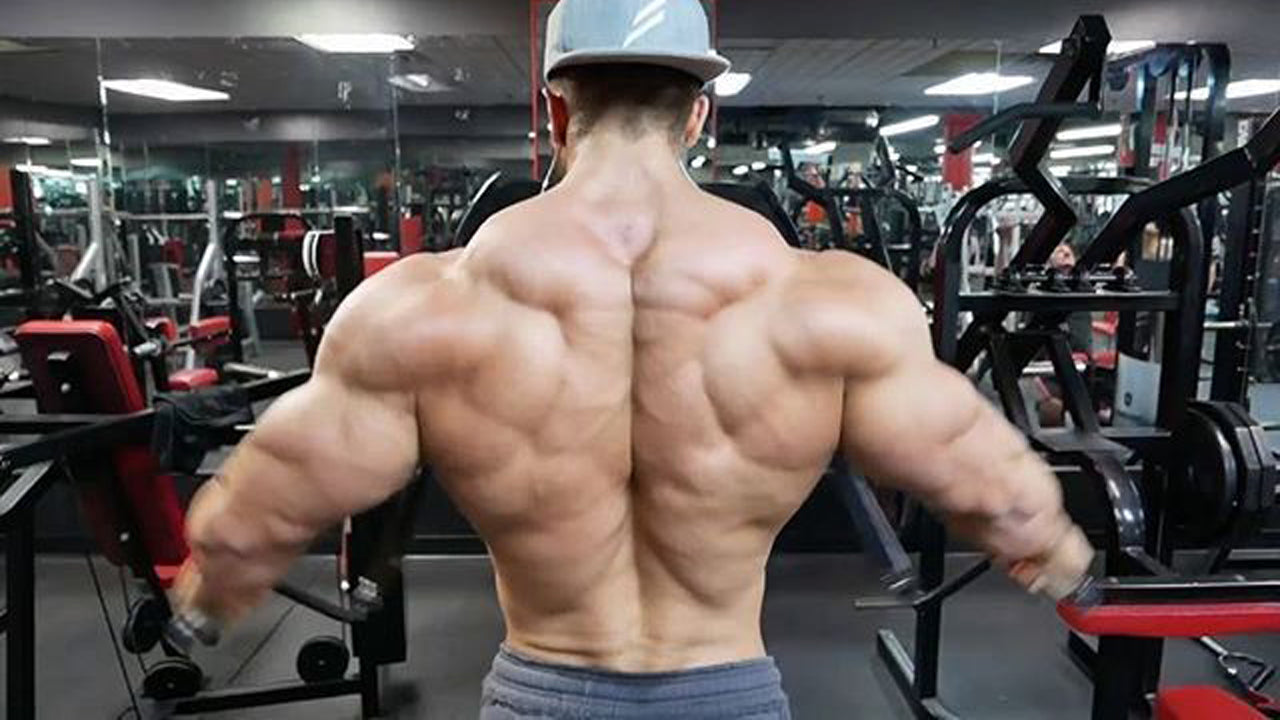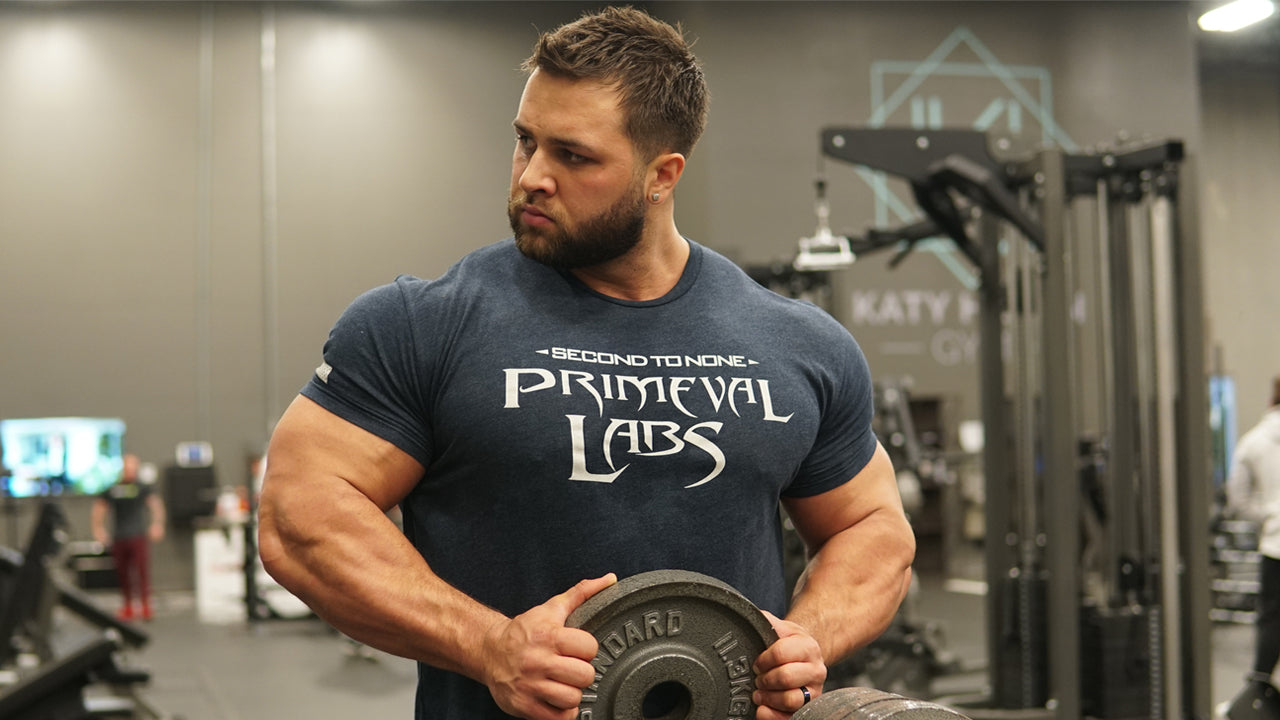Everyone loves to train their chest and biceps at the gym, but for some reason or another, the muscles on the backside of the body simply don’t get the attention they should.
Maybe it’s due to the fact you can’t see your back muscles in the mirror when flexing at the gym, or more likely, it’s the fact that training your back is incredibly taxing and demands the grit and determination rivaled only by leg day.
So, if you’re sick and tired of having an underdeveloped, sorry excuse for a back, read on to find out exactly what you need to do to grow a barnyard door back!
3 Big Benefits of Back Training
Back training isn’t only important for developing a complete physique, it also improves a number of other things, including:
1. Increases Pressing Strength
Do you want a bigger bench?
Then, you’re going to want to know how to build a bigger back.
Simply put, having a strong upper back allows you to create more tension in your upper body, thereby giving you a more stable and solid base from which to press.
Plus, with a bigger, stronger back, you’re also less likely to suffer shoulder injuries as a result of muscle imbalances between the front and back sides of your body due to too much pressing and not enough pulling.
2. Improves Athletic Performance
Strengthening your back muscles also helps create a more stable spine and stronger posterior chain, which improves overall athleticism.
With a more powerful back, you’ll be able to lift, twist, turn, and move much more efficiently and effectively.
Even everyday tasks like carrying the groceries or moving things around the house will be easier with a stronger back.
3. Supports Good Posture
Nearly every gym bro suffers from the “pulled forward”, hunched over posture.
This is a direct result of too much pressing and not enough pulling in your training program.
To prevent yourself from looking like a muscle-bound Quasimodo, start doing more pulling each week.
If you’re currently dealing with a severe imbalance between your pushing and pulling muscles, try aiming for a 2:1 (or 3:1 if your posture is really bad!) pull-to-push ratio.
7 Important Back Training Tips
1. Maintain Strict Form
The single MOST IMPORTANT aspect of any back workout (or any other workout for that matter) is how you perform your reps.
You can do the ultimate high-volume back workout, but if you’re relying on gravity and momentum to do the majority of the work, you’re never going to see the results you want to.
Back exercises are particularly susceptible to all sorts of flailing, jerking, and bouncing to raise and lower the weight.
Rather than focus on trying to impress everyone at the gym with how many plates you can stack on the T-Bar row, focus instead on using proper form, keeping tension in your upper back and really “feeling” the muscles raising and lowering the weight.
2. “Drive” with the Elbows
Far too often people “kneecap” their back workouts by pulling too much with their arms and not their upper back muscles.
There are a couple of ways to prevent this from happening:
- Focus on pulling with your elbow(s) rather than your fist (trust us, this mental cueing might seem insignificant, but it can pay huge dividends in the results you see from your back workouts).
- Use a false (suicide) grip, where your thumb is alongside your other fingers on the bar/handle, for any type of row, pull up or pulldown.
- Utilizing this grip de-emphasizes contribution from the forearms and biceps that commonly occur during back exercises
3. Be Mindful of Elbow Position
Not only is “pulling” with the elbow important for ensuring your lats, rhomboids, and rear delts are doing the work during a back exercise, but the angle and position at which you draw your elbow back during the exercise will determine which portion of your back you’re targeting.
Pulling with your elbow out to the side of your body emphasizes more of the rhomboids, rear delts, and traps.
Keeping the elbow tucking in closer to the body as you pull places more tension in the lats and mid-lower traps.
Make sure to use a mix of pulling movements and elbow positions in your back training to make sure you’re developing all aspects of the back musculature.
4. Squeeze Your Shoulder Blades Together
To get the most out of your back training, you need to put the muscles of the back through a complete range of motion, i.e. full extension to complete contraction.
When training your back, this means beginning the movement with the shoulder blades protracted (i.e. shoulders rounded forward). As you pull the weight to your body (or pull your body up to the bar as is the case with bodyweight rows and pull ups), you should be pulling your shoulder blades down and back, squeezing them together as if you’re trying to crack a nut between your shoulder blades.
Hold the point of peak contraction for a count or two, and then slowly reverse the movement, lowering the weight under control until your arm(s) are fully extended and your shoulders are pulled forward.
5. Variety
The back is comprised of several different muscle groups, including the lats, rhomboids, rear delts, and traps.
What this means is that you need more than just deadlifts to build an impressive back.
To effectively grow the back and ensure optimal muscle development, you need to hit it from a variety of angles.
As such, your back training should include a mix of different grips, pulling angles, and exercises so that you hit every region of the back, resulting in superior growth.
6. Check Your Ego
As we mentioned above, it can be enticing to load up a big stack of plates on the T-bar row, cable row, lat pulldown, etc., and try to out rep every bro in the gym.
But, please, for the sake of your joints and gains, resist the temptation to go too heavy.
Lifting more weight than you can actually control makes proper form virtually impossible to achieve, which means you’re not actually working your back muscles.
Moreover, you’re also at an increased risk of injury, especially the lower back.
Basically, if you can’t control the weight throughout the entire range of motion, you’re lifting too heavy.
Check your ego, and lower the weight!
7. Patience
Like any other muscle group, growing your back will take time. In other words, just because you started doing 3 sets of pull ups and rows each week doesn’t mean you’ll have the King Cobra back of Kai Greene.
But, with relentless dedication and intense training, you can transform your non-existent lats and rhomboids into the most eye-catching aspect of your physique.
Big Back Workout
|
Back Workout |
||
|
Exercise |
Sets |
Reps |
|
Chest-Supported Rows |
3 |
8 - 10 |
|
Chin Ups (add weight if needed) |
3 |
10-12 |
|
Cable Rows |
3 |
10-12 |
|
One Arm Dumbbell Rows |
3 |
12 - 15 / arm |
|
Straight-Arm Pulldown |
2 |
12-15 |
|
Reverse Hyperextension |
3 |
Max Reps |
Attack your Back!
Building big back muscles isn’t easy, but it’s absolutely crucial to do so if you want to maximize size, strength, and performance.
If you need help getting amped up for your workouts, Primeval Labs has created an arsenal of pre workouts, including stim-free options for those who train late at night or are taking a break from stimulants.















Leave a comment
This site is protected by hCaptcha and the hCaptcha Privacy Policy and Terms of Service apply.